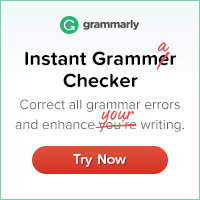
Title: Animal Mouths
Author/Photographer: Mary Holland
Publisher: Arbordale Publishing
ISBN: 978-1-62855-5615
“Most humans eat plants and animals, which makes us omnivores. Like the opossum, we have many different kinds of teeth. How many kinds can you find when you open your mouth and look in the mirror?” Mary Holland asks in her children’s book, Animal Mouths.
Second in the Animal Anatomy and Adaptation series, this thirty-two unnumbered page paperback with a thick folding jacket cover targets children ages four to eight years old who enjoy educational information about nature. With no scary scenes except the concern some young ones may have regarding capturing and eating other animals and insects, only one picture shows an insect in a bird’s mouth. The book may be best read out loud by adults to beginner readers due to some complicated wording.
In this artistically photographed collection, what is inside the animals’ mouths is the focal point. Beginning with a moth, one learns as a caterpillar it has mouthparts but does not as an adult. Living for about a week, it does not eat so does not need to chew.
While turtles have no teeth but strong jaws, birds use their beaks to grab and devour their prey. Frogs have small teeth on their upper jaws while snakes have sharp teeth that regrow if they are broken. Butterflies have proboscises; robber flies have piercing-sucking mouthparts. Herbivore animals have flat teeth with incisors, and carnivores’ teeth include canines. Omnivores have many different combinations of teeth. By understanding the differences between the animals and the many kinds of teeth, one can readily identify them in nature.
The last four pages have more educational tools of learning activities for creative minds that involve other uses for mouths, a mammal teeth matching game, a bird beak puzzle of what they eat, and a glossary of teeth names.
What makes this book fun is not only the impressive photographs and explanation of teeth, but also the informational data at the end for older readers. Any child will enjoy viewing the animals and insects from their skull formations to the up-close pictures that show the differences between species.
Award-winning children’s book author, Holland is also a naturalist, nature photographer, and columnist living in Vermont with her dog. Having worked as a naturalist at New York’s Museum of the Hudson Highlands and the Massachusetts Audubon Society, she has written several children’s books.
Rating: 4.5 of 5
Thanks to Arbordale Publishing and Bookpleasures for furnishing this complimentary book in exchange for a review of the reader’s honest opinion.
This review will be posted on Bookpleasures and Amazon with links on Bookfun.org, Godinterest, Pinterest, LinkedIn, Facebook, and Twitter.
GRAMMARLY was used to check for errors in this review.






